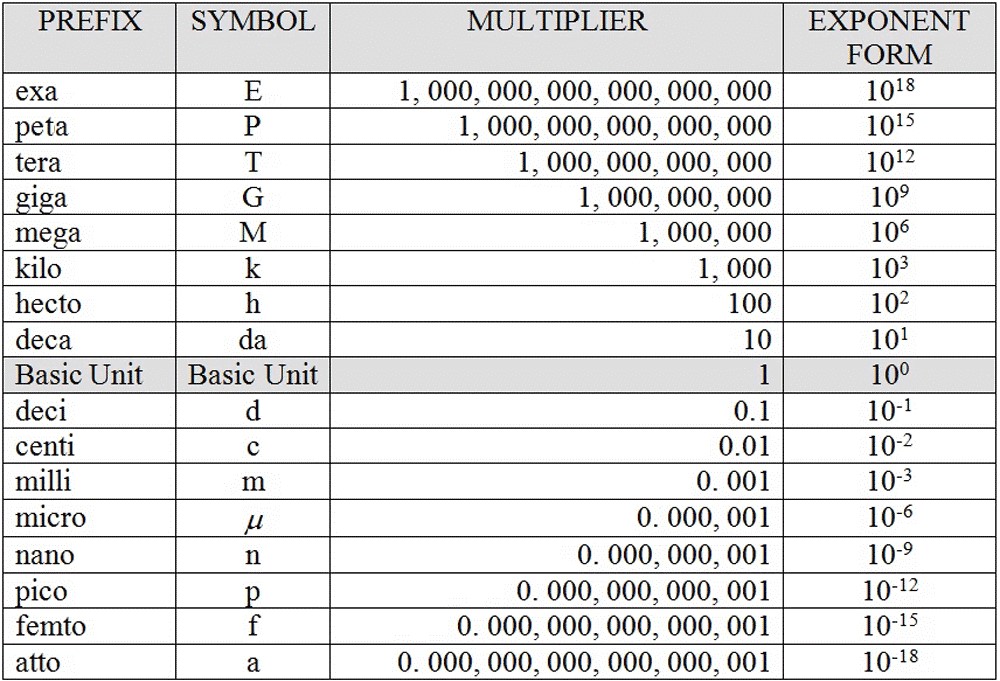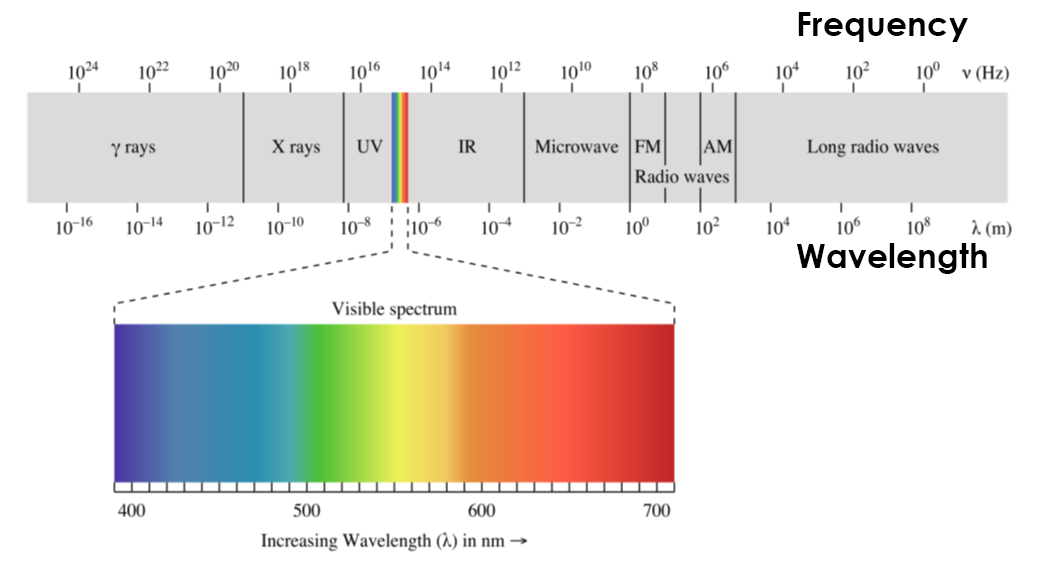In this lab we will become more familiar with electromagnetic radiation, how it is measured and its implications in remote sensing. For this lab you will completing and turning in a worksheet. The worksheet can be found on the Canvas course page.
You may complete it electronically, but most students find it easiest to print and complete in hard copy. You can then scan and submit your completed worksheet as a PDF.
When we are discussing electromagnetic radiation we are often dealing with both very large and very small numbers. Therefore scientific notation is often used to write these numbers.
Many of the variables for radiation equations are written in scientific notation, so you will be to become comfortable converting numbers to and from scientific notation as well as adding, multiplying and dividing numbers in scientific notation.
Scientific Notation Review
>>
In addition to the use of scientific notation, you will also see a variety of metric prefixes used to describe wavelength, frequency and energy. In order to do the calculations for this lab we will need to convert frequency and wavelength units to base units of Hertz and Meters.



Scientific Notation and Metric Prefixes Overview
Converting from Scientific Notation to Metric Prefix
Converting from Metric Prefix to Scientific & Standard Notation
Wavelength and Frequency Calculations
Wien's Law Example
Stefan-Boltzmann Law Example



© Copyright 2020 HSU - All rights reserved.